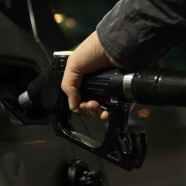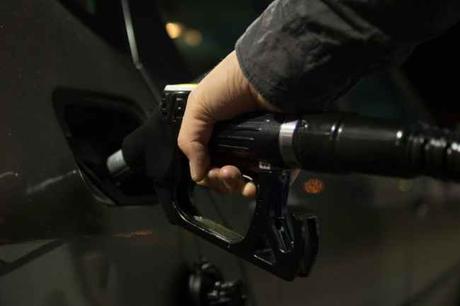
What is fuel economy? The simple definition is how much fuel you use when driving your car. If your fuel economy is bad, it means you're burning through so much petrol or diesel every single day. In one journey, you could use almost twice as much fuel as another driver! Part of this comes down to your car and how it's designed, but a significant aspect relates to your driving habits.

Clearly, if you drive a hybrid or electric vehicle, your fuel economy will be much lower than average. To be honest, if you have either of these cars you can pretty much ignore this post! This article is for people driving petrol or diesel cars that want to use less fuel. Here are five simple suggestions to make it possible:
Keep your tyres at the right pressure
Tyre pressure plays a crucial role in preserving fuel. Let's break it down and see why deflated tyres are a problem. A deflated tyre requires more effort to propel your car along. There's not as much grip on the road, so your engine has to work harder. In turn, this means you push your foot down further and increase fuel consumption.
Consequently, your first step is to maintain the right tyre pressure. This varies depending on how many people are in your car, and it should be present in the owner's manual. If you want to go one step further, you may consider buying new wheel and tyre packages for your car. It can set you up with a firmer and more stable base, decreasing the demands on your engine. Instead of stuttering along against lots of resistance, your car will glide across the road, using up less fuel.
Remove anything from your roof
If you have anything on your roof, you should get rid of it - unless you need it to be there. For example, if you're going surfing, you will need a roof rack with your surfboard on it. But, if you're driving with an empty roof rack or bike rack, you should take it off. Why? Because it creates something called the 'drag effect.'
Simply put, the added stuff on your roof creates more air resistance. It basically drags your car down, meaning you have to fight harder to maintain a normal speed. It probably won't feel much different when you drive, but it has an effect on your engine. Again, more power is required, meaning more fuel is consumed. So, drive with a bare car whenever possible to minimise fuel consumption.
Keep your car as light as possible
Try to keep your car as light as possible by removing any non-essential items from it. The roof rack is one example, but consider all the things in your boot or back seats. It's quite incredible how many useless things we keep in our car at all times. The lighter your car is, the more efficient it will be.
Once more, it's all related to the amount of effort put in by your engine. The best way to picture this is to think of a human being. If you walk around with 20kg in a backpack, your muscles are instantly working harder. You start to sweat as you use more energy. The same happens to a car; the heavier the load, the more fuel it uses. So, try to think of all the ways you can make your car lighter, decreasing the demands on the engine.
Accelerate & change gears smartly
Most of us don't drive economically. What this means is we do things that (unknowingly) consume loads of fuel. The best example is when we accelerate or change gears. If you really put your foot down and get loads of revs up, you instantly use loads of fuel. As such, if you constantly stay in a low gear - or wait until your revs are super high to change - your fuel economy will be terrible. This is why loads of 'boy racers' are filling their cars up with petrol multiple times a week!
Instead, you have to learn a smarter approach to driving. Accelerate gently, keeping the revs to a minimum. Most experts will recommend that you change gears as soon as possible, going up to the highest gear possible. Ideally, you should be in the highest gear - while still maintaining the speed limit. This means you aren't revving the engine too much and putting too much strain on it. In turn, it drastically lowers the amount of fuel consumed per journey. The cool thing about this is that you can run your own experiment. Drive in your usual style, then drive economically. Look at the fuel consumption after each journey and be amazed at the difference!
Avoid idling your car
Idling is such a problem as it consumes a crazy amount of fuel. The worst part is that this fuel is consumed with no benefit at all. When you drive badly, at least the fuel consumption still gets you to your destination. With idling, you're literally sitting in the same spot without moving at all. It's the equivalent of letting your tap run and standing there staring at money flowing down the drain.
Consequently, it's no surprise that most cars come with a setting to prevent prolonged idling. Modern vehicles have a start/stop feature where the engine cuts off when you come to a stop. This conserves fuel, and the car turns back on when you need to move. If your car doesn't have this feature, you can basically do it yourself. All you have to do is turn your engine off (make sure the handbrake is on), and you'll save fuel. It might not work that well in stop/start traffic, but it definitely helps if you're waiting for someone. Never sit outside someone's house or in a car park with your engine running - it's a waste of money!
Try these five techniques if you want to improve fuel consumption and save lots of money. They're not hard to implement, so start trying them today!

